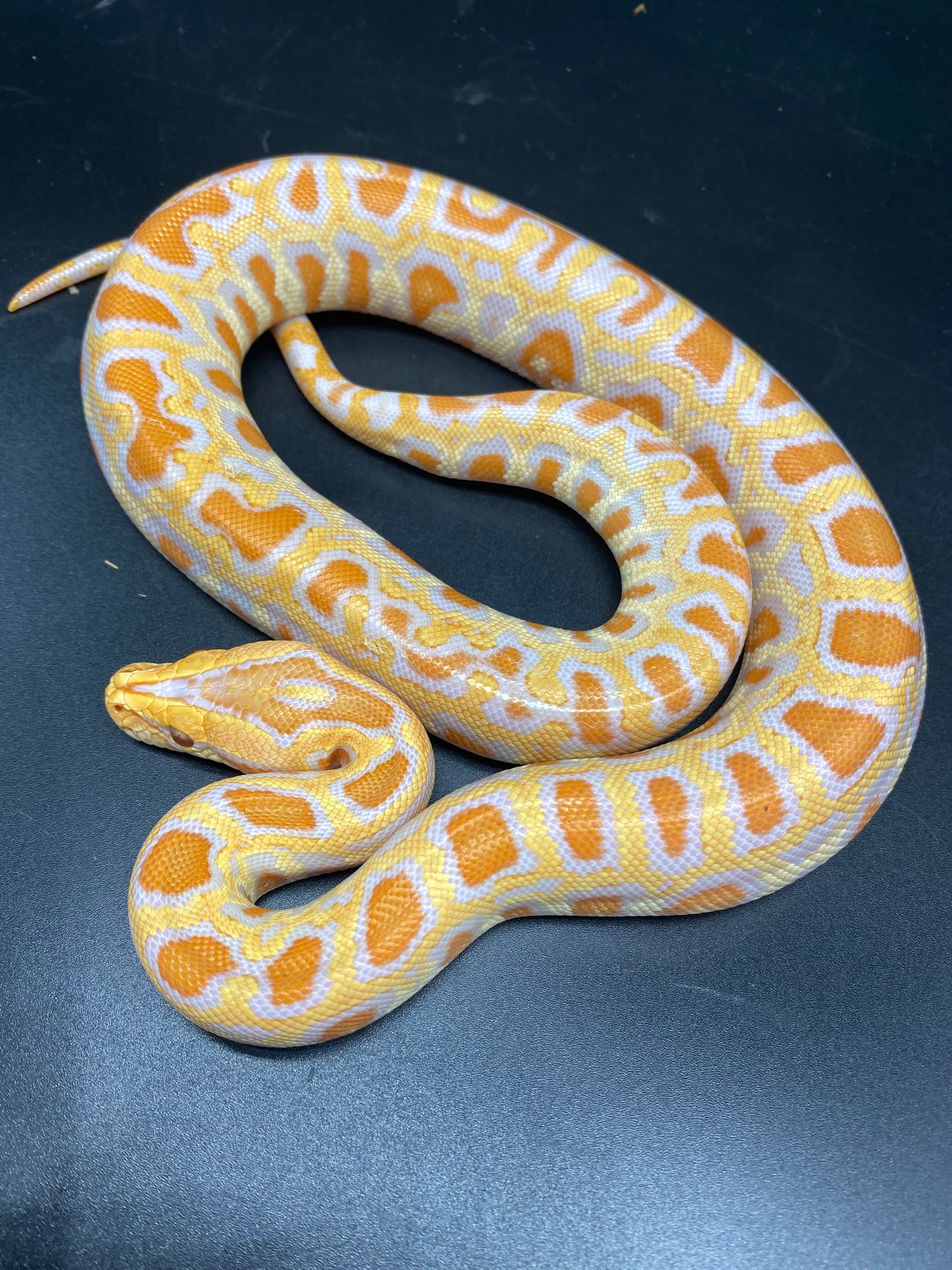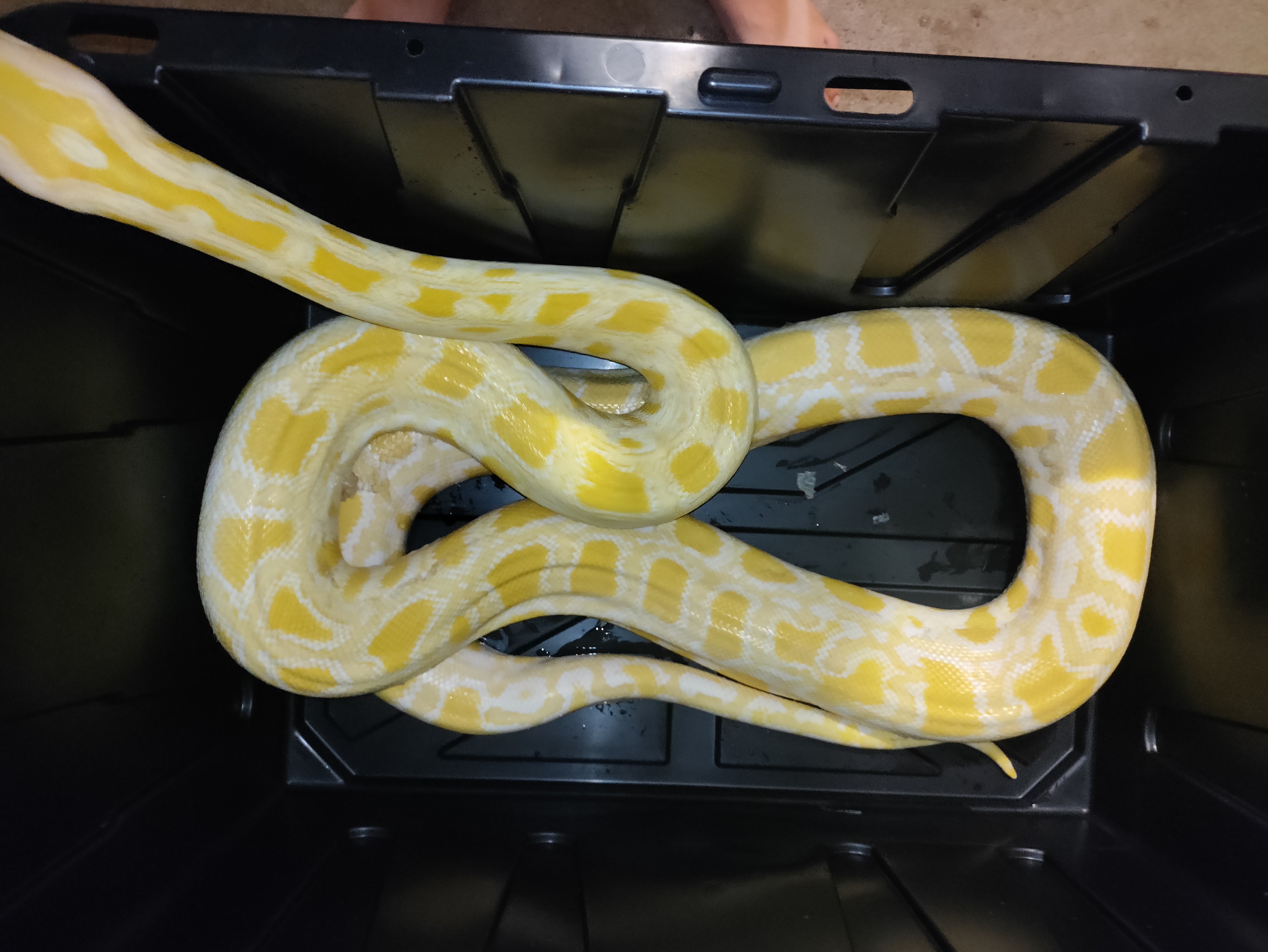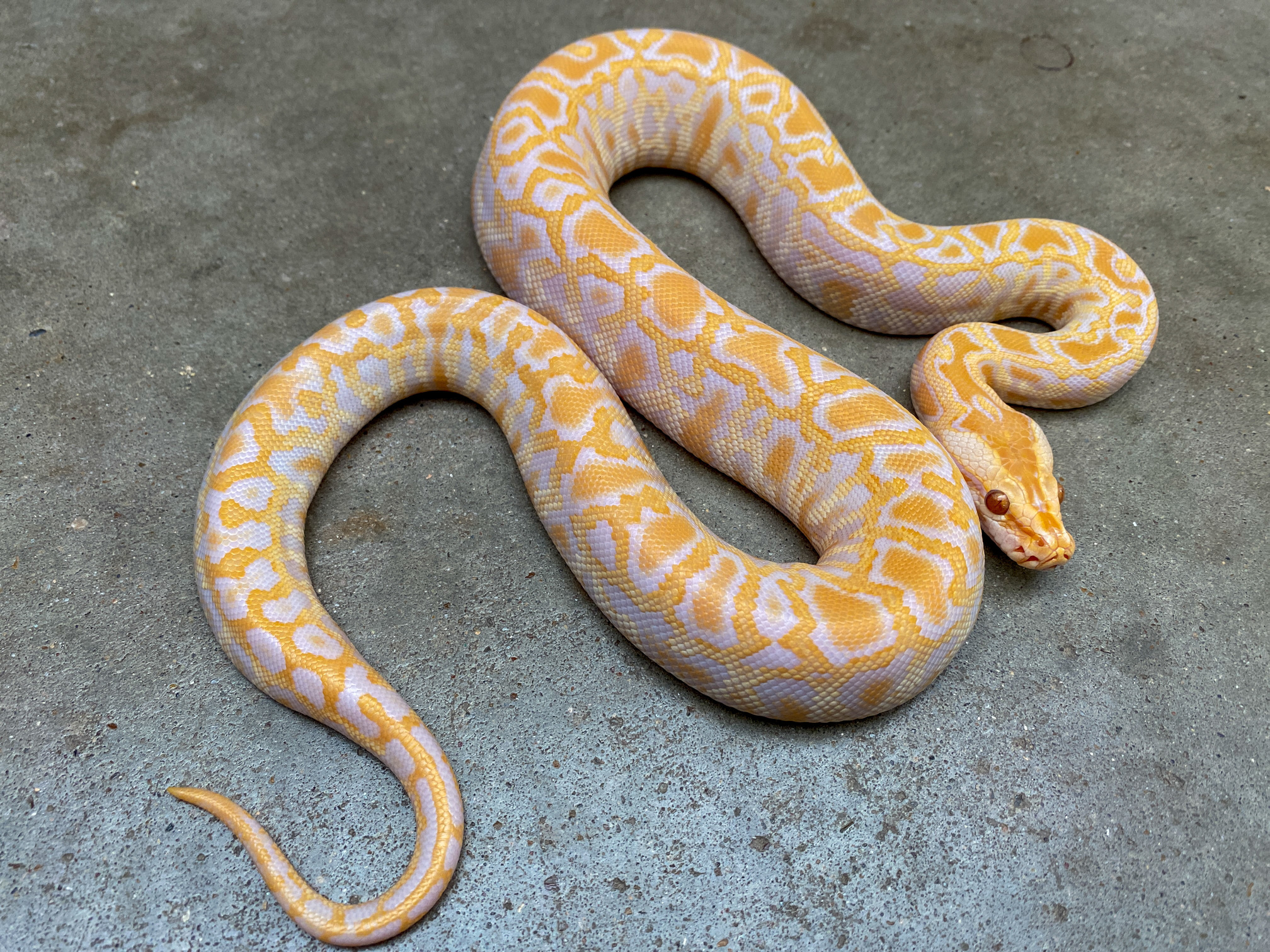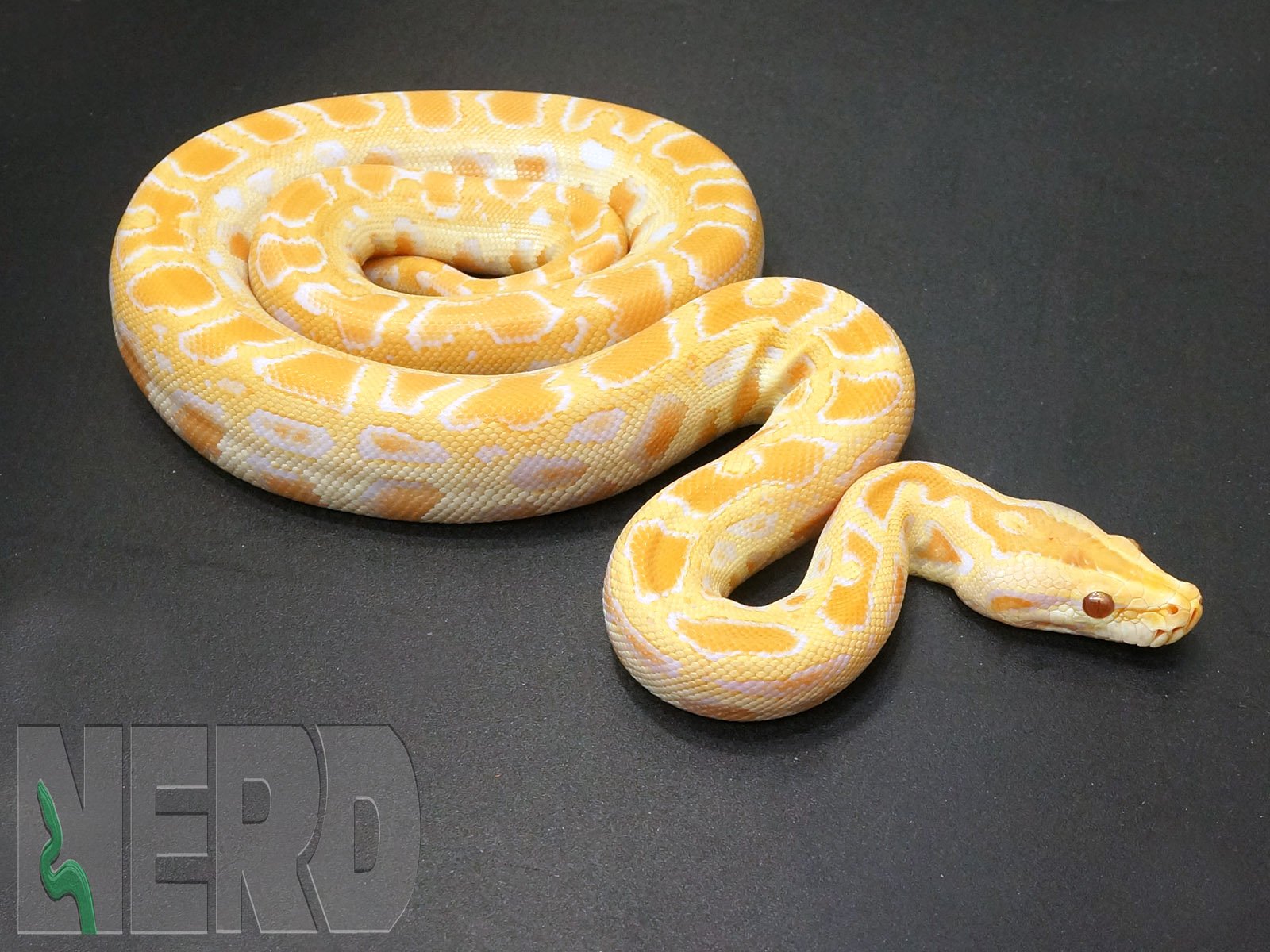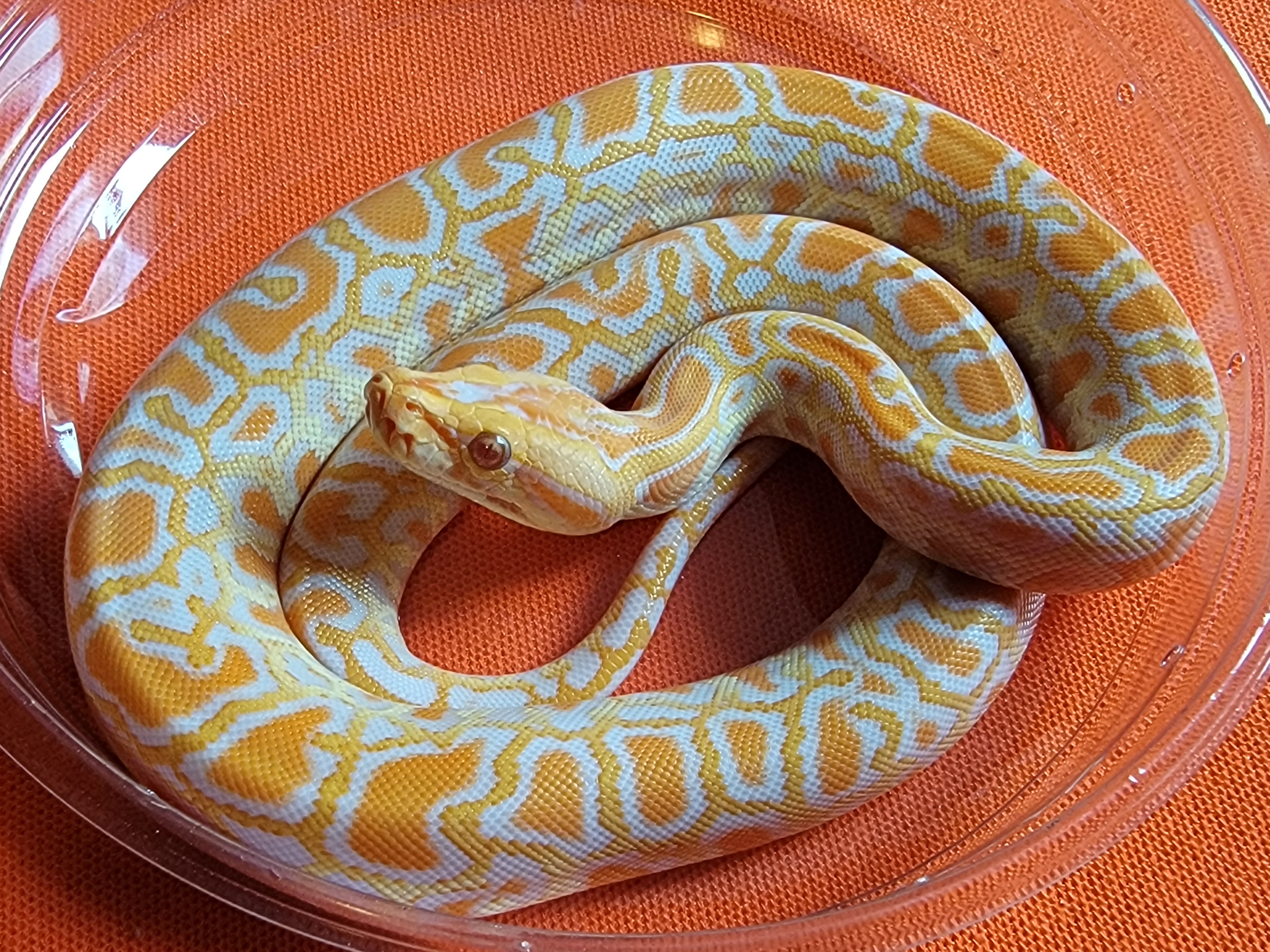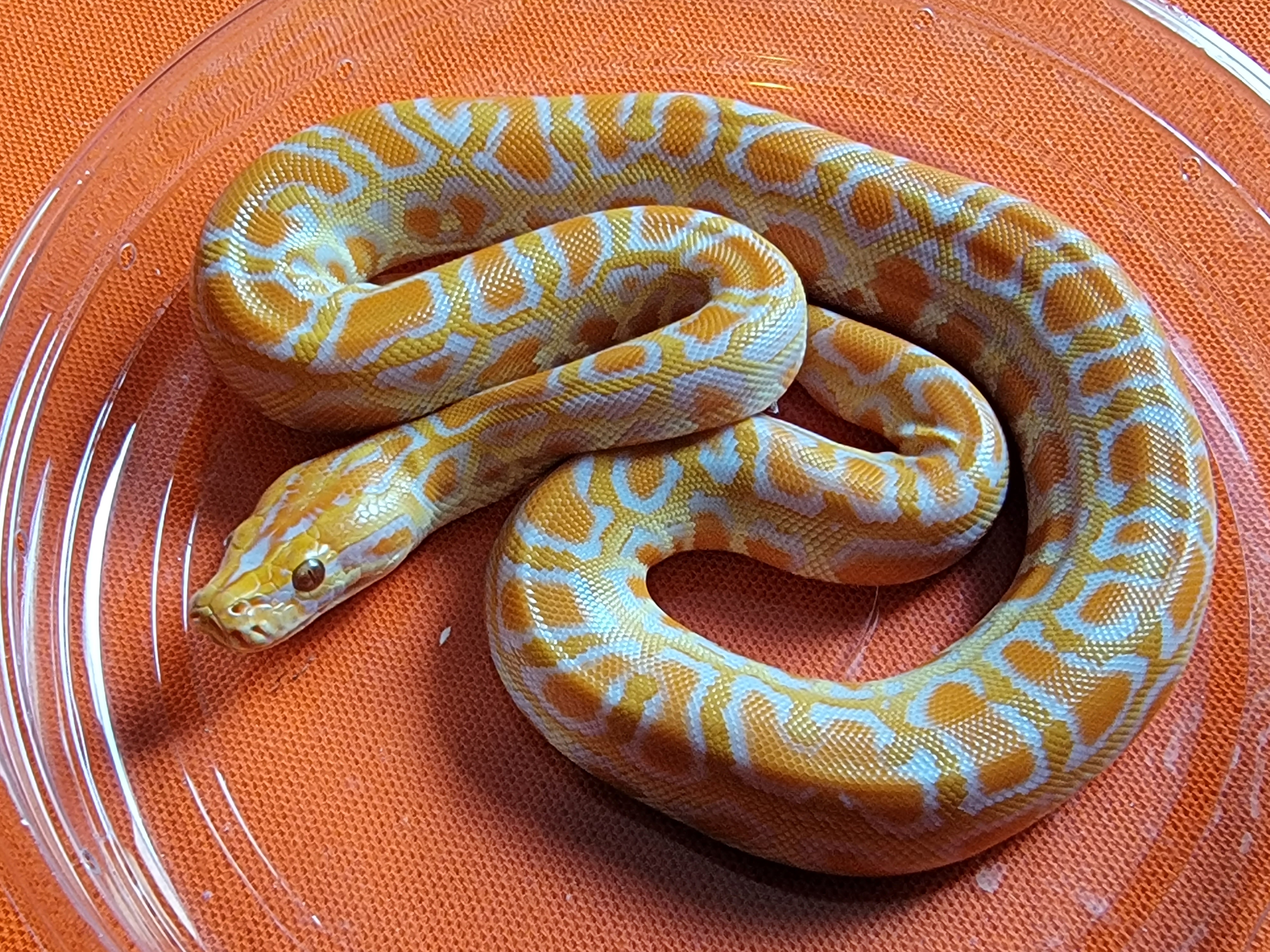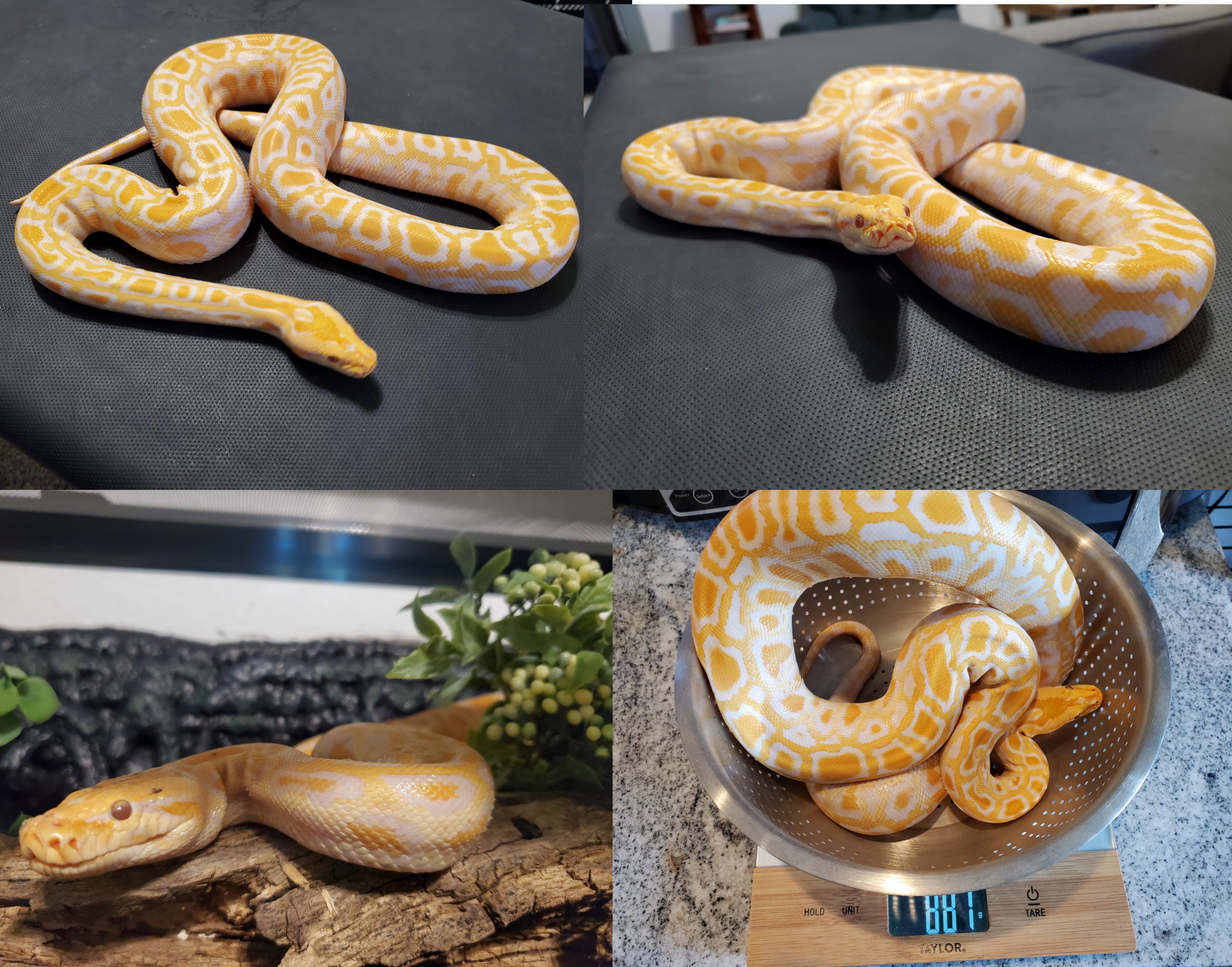Albino
Type: Recessive
First Produced By: Bob Clark Reptiles
Aliases: Blonde
Issues: Photophobia
First Produced In: 1986
Availability: Common
Last Updated: 2022-04-18
Do you have any suggestions or corrections for this article?
Click here to contribute feedback
About
The first Albino Burmese Pythons were discovered in the early 1980s. Python breeder Bob Clark obtained one of these animals and produced the first ever captive bred Albino Burmese Pythons in 1986. [1]
Issues
Photophobia
While the word photophobia literally translates to a "fear of light”. Its not actually that you are scared of light, but instead, are incredibly sensitive to it. Animals with albinism experience photophobia due to the lack of pigment in the iris, which does not allow the eyes to filter out light.
History
The first python differing markedly from the wild type in appearance to become available was the amelanistic form of the Burmese Python (Python molurus bivittatus), known in the trade as the Albino Burmese. This snake lacks all black pigment, but retains yellows and some pink. I first saw this snake in the March 1981 National Geographic article about the international trade of wild animals. The bright lemon yellow and white snake was owned by a Thai animal dealer. It was imported into the United States and sold by Tom Crutchfield. I obtained that snake in January of 1983, bred it to a normal female and hatched heterozygous (gene-carrying) babies that summer.
This trait, as are most of the traits commercially available in reptiles, is recessive. When an animal showing the trait is bred to a normal animal, the offspring are normal in appearance. For the offspring to exhibit the trait, both parents must show or carry the trait. In contrast, a dominant trait requires that only one parent have the trait, and all individuals that carry the trait exhibit the characteristics of the trait.
In the early summer of 1986, I hatched the first Albino Burmese Pythons. In contrast to the adult male, these snakes were bright orange, gold and white. The bright yellow color develops with size and age. The snakes were available in good numbers from the start and commanded high prices for several years. The snake’s prolific reproductive ability and the strong interest in propagating the animal have made it one of the most commonly kept snakes today. This one snake gave herpetoculture a real boost in the late 1980s. Before this time, few reptiles ever sold for more than a few hundred dollars. Suddenly, snakes were viewed as an investment, an income-generating venture, not just a hobby that consumed dollars. It was a little disturbing to me at the time that no one seemed to be keeping these snakes for the enjoyment of it. Looking back, I think, in most cases, the profit motive was a justification that helped rationalize the purchase of an attractive, desirable, but expensive animal. I credit the Albino Burmese Python for allowing me to establish my own business breeding reptiles full time, generating the income necessary to allow it and increasing the market to make it all possible. [2]
The green Burmese and the albino were bred together, and because both mutations are recessive, the babies looked like the normal, wild-type snake. When these snakes produced offspring, by appearance, four types hatched. The largest percentage of the babies looked normal, there were equal percentages of green and albino snakes, and a very few snakes were albino with the green pattern. The laws of probability dictate that only one in 16 hatchlings will show both traits. My first breeding of the double recessive snakes produced no “green” albinos from 29 eggs (it’s the same problem that plagues the local weatherman). Later that year, Mark Bell, now of Naples, Florida, hatched the first of these new snakes. The snake was light orange fading to almost white on the sides, with darker orange spots centered on the dorsal midline. The snake becomes yellow and the pattern fades as it grows. [3]
Appearance
Head
Albino Burmese Pythons have ruby red eyes.
Body
Albino Burmese Pythons have a bright white base covered with vibrant yellow and tangerine orange patterning.
Tail
The tail follows the same coloration.
Proven Lines
No known proven lines
Related Traits
No known related traits
Combos
- Blizzard (Super Hypo Albino)
- Pearl (Hypo Albino)
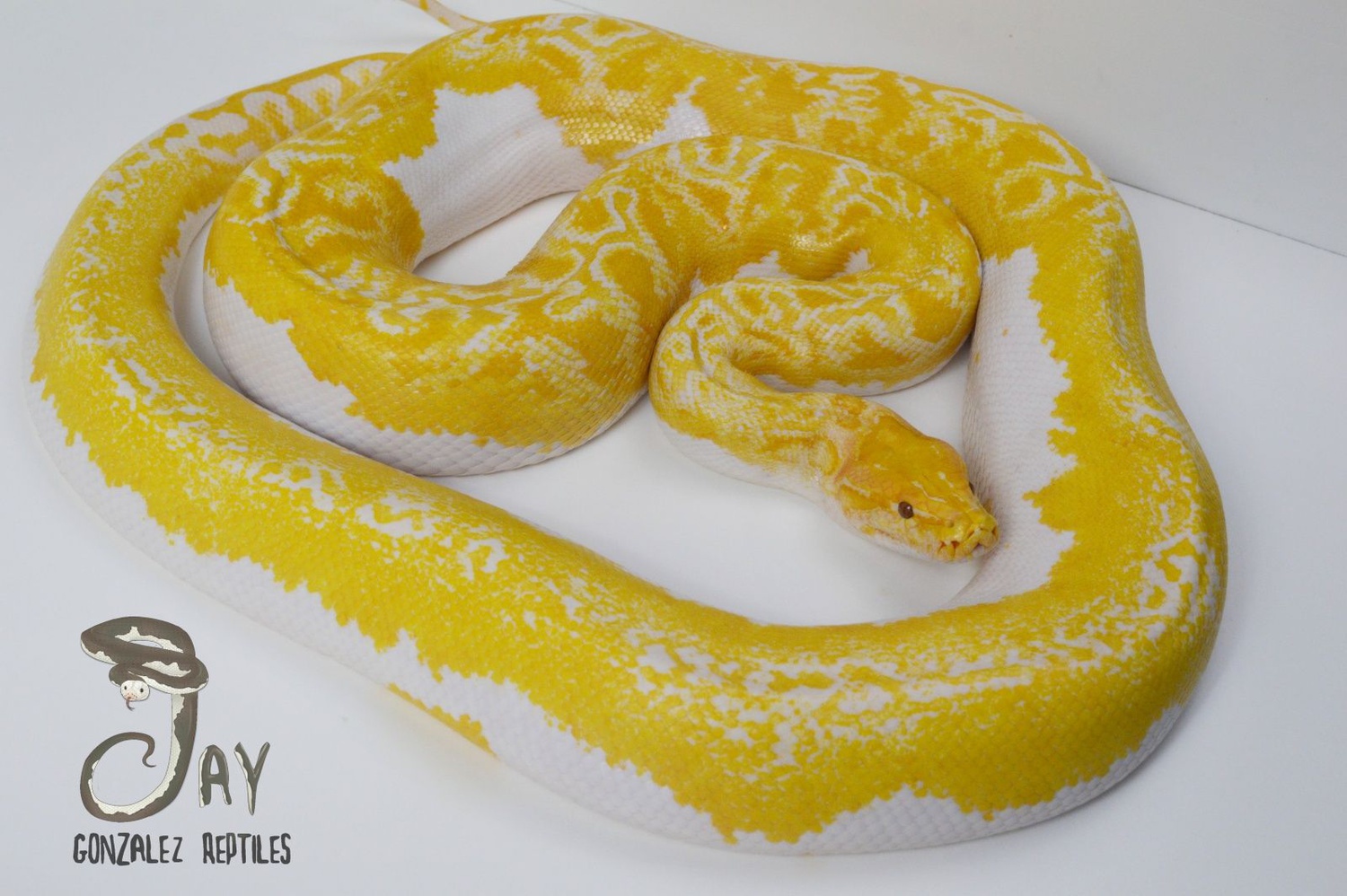
Albino Pied Burmese Python by Jay Gonzalez Reptiles
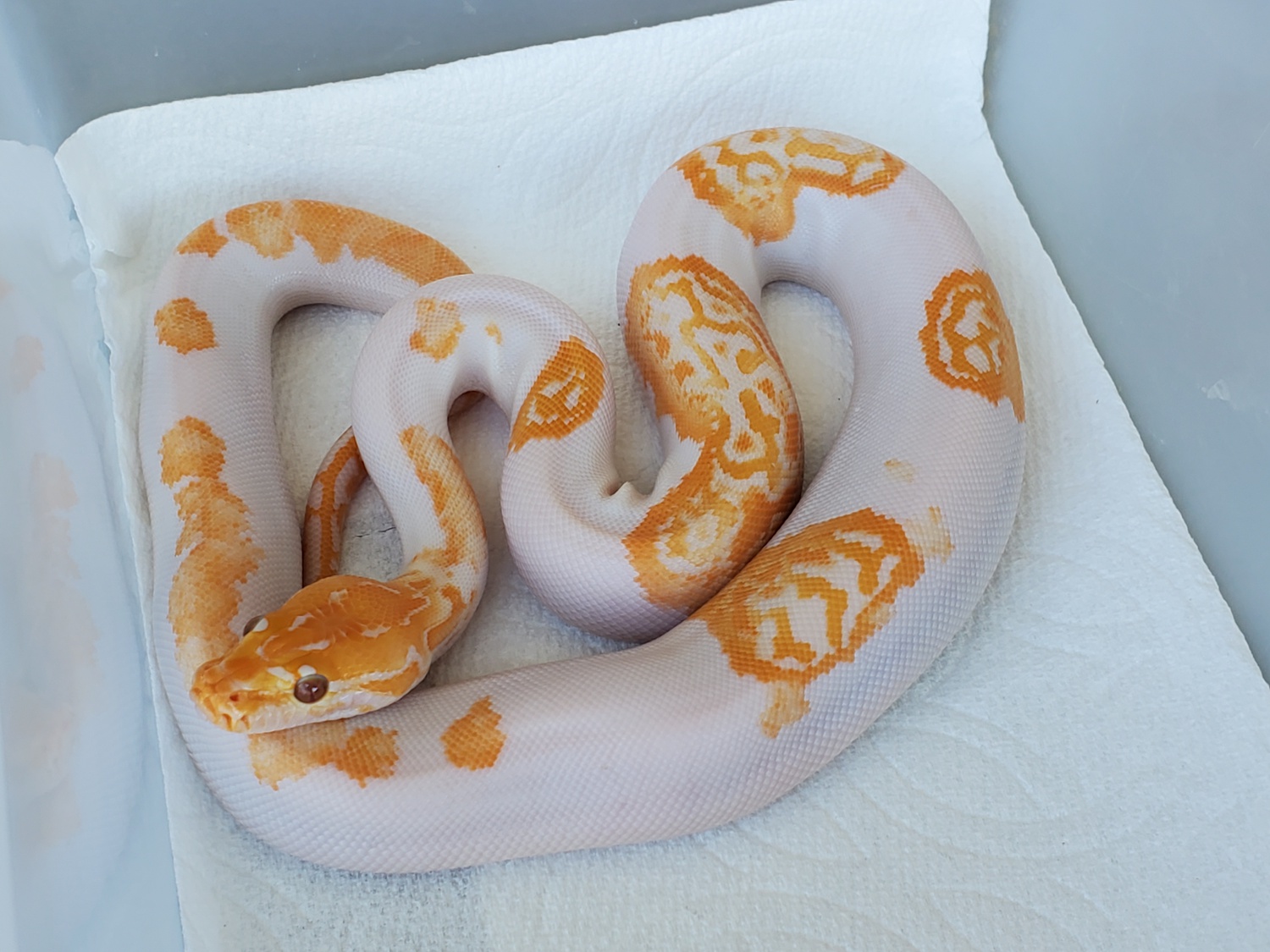
Albino Pied Burmese Python by Ben Rogers Reptiles
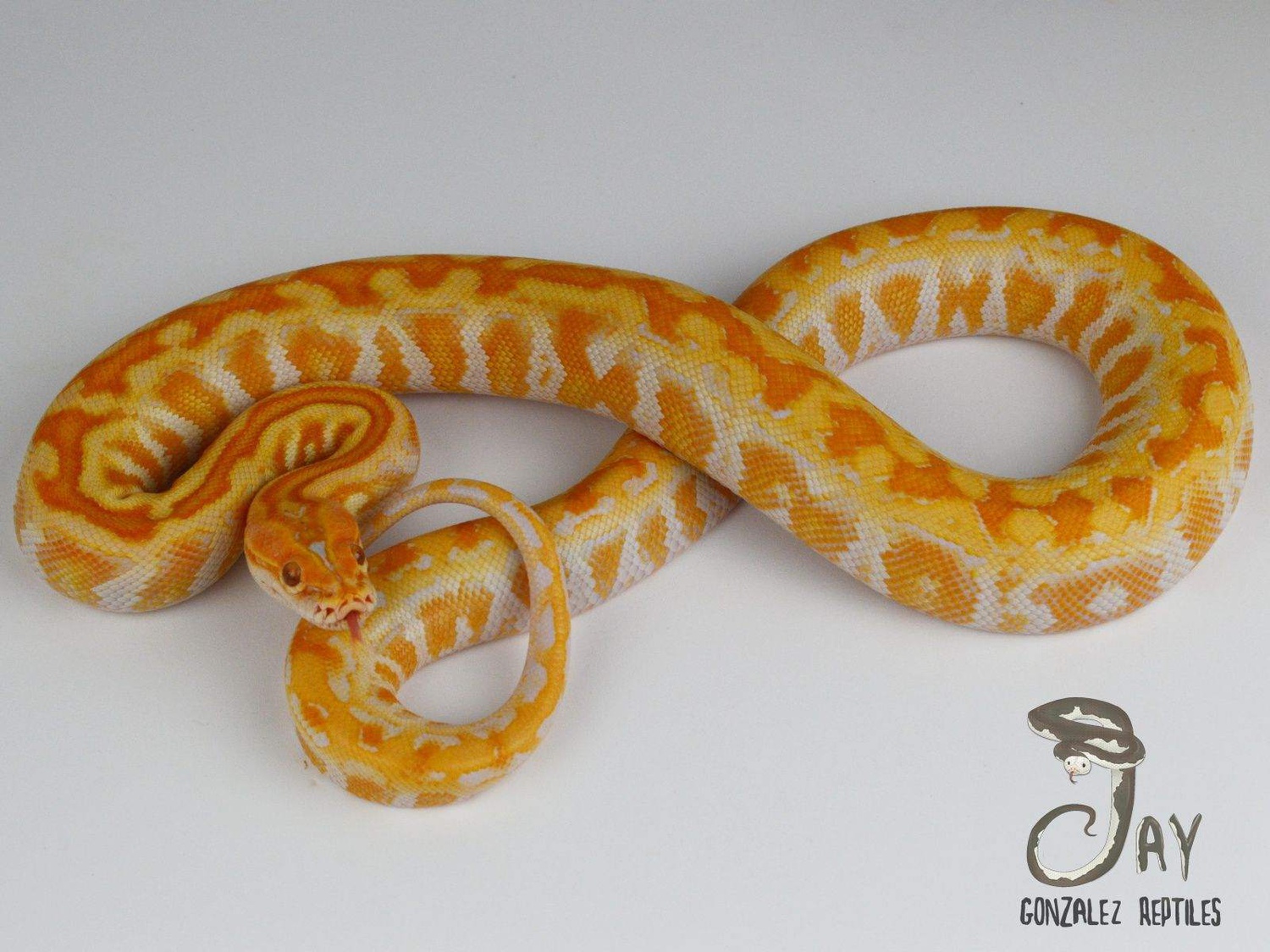
Albino Champagne Het Granite Burmese Python by Jay Gonzalez Reptiles

Albino Labyrinth Burmese Python by Shotts Reptiles
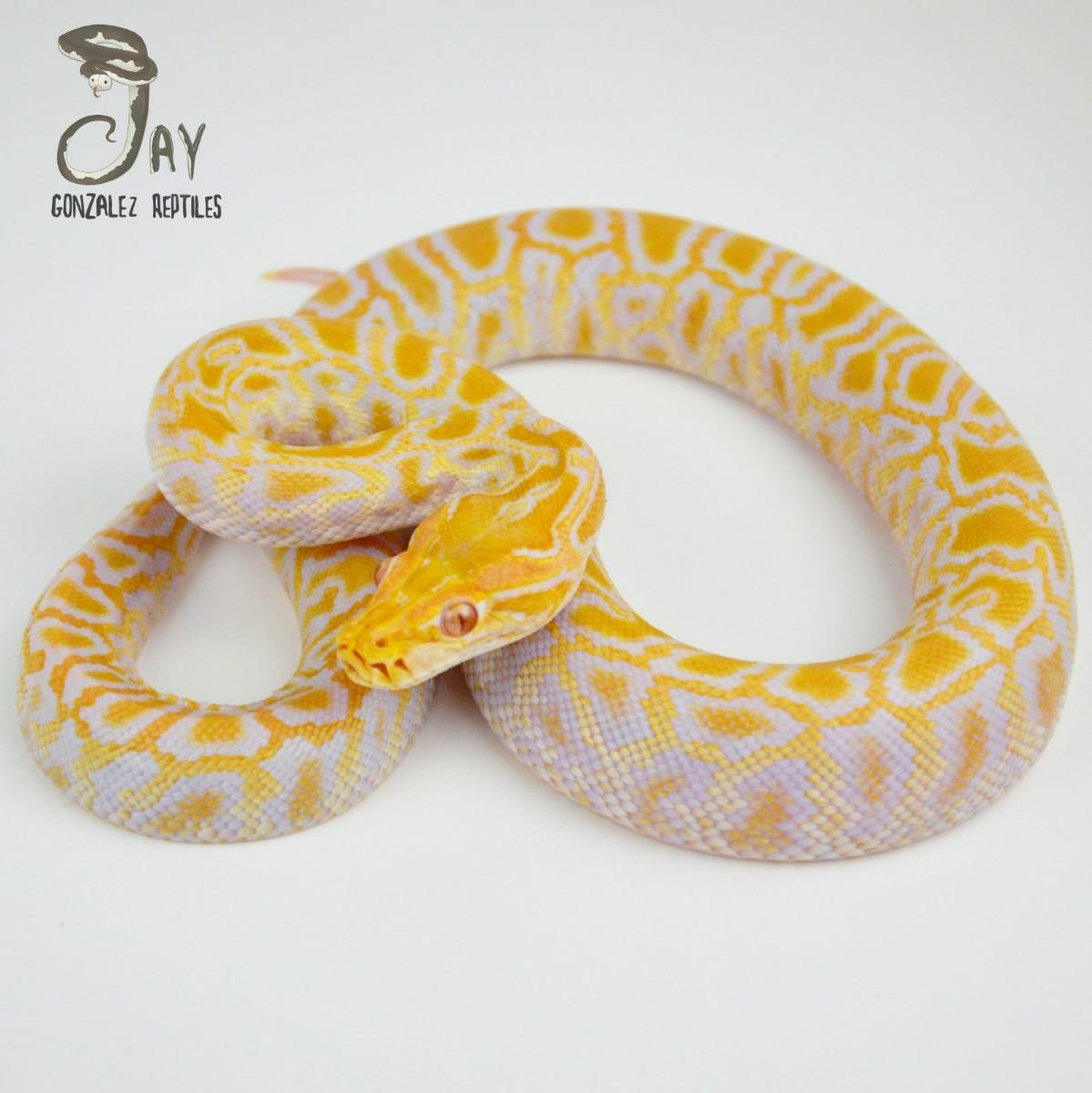
Albino Wei Caramel Burmese Python by Jay Gonzalez Reptiles

Granite Pearl Burmese Python by New England Reptile Distributors
